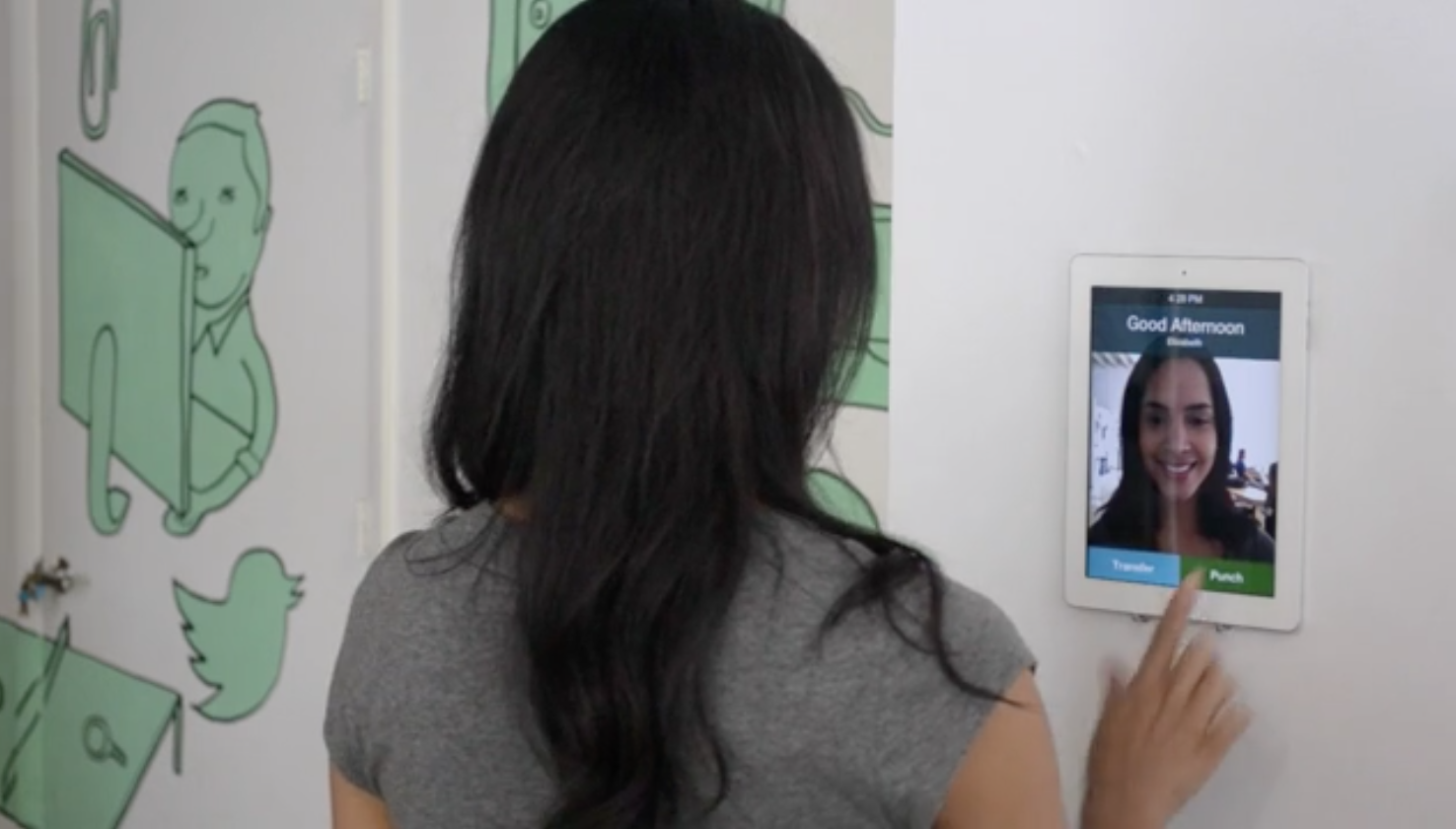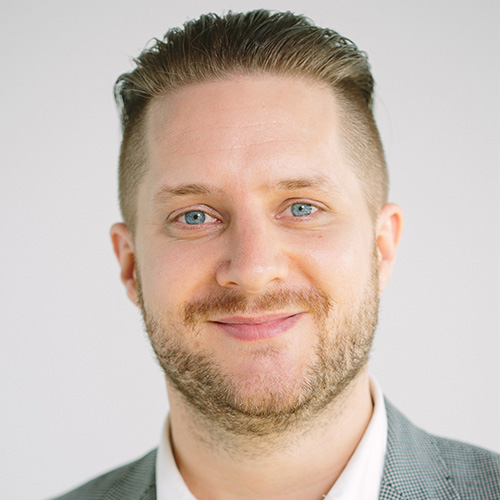
It may surprise people to know that although Kairos is still a relatively young company, it has not always focused on providing facial recognition software. In its early days, Kairos was best known for its flagship app, TimeClock.
As its name suggests, Kairos designed TimeClock to clock employees in, who are paid on an hourly basis. The TimeClock app used facial recognition technology to enable employees to clock in, to eliminate the risk of “buddy punching", which is when people clock in on for their coworkers for time when they did not actually work.
Now, TimeClock was an excellent product - make no mistake about that. However, it did not take long for the team at Kairos to discover there was far more interest in the facial recognition technology itself. There was more potential uses for facial recognition technology than just underpinning the time clock itself.
At this point, Kairos had a major decision to make. Should they continue to devote their time, energies and funds to further developing the time clock app, or should they change direction and put the focus on the facial recognition technology underpinning TimeClock? “We had sold our investors, customers, and employees on TimeClock. It was tough decision to go another direction, but in the end, we knew that all of those three groups would be rewarded.” said Brian Brackeen, CEO of Kairos
In the end the facial recognition technology won, and the Kairos you know today began evolving.
It is important that you learn from your experiences if you are going to advance and improve. I thought it would be a good idea to interview some of the members of Kairos who have been here from the beginning, and who were part of the original TimeClock project.
I asked Brian Brackeen (CEO), Cole Calistra (CTO), Ben Virdee-Chapman (CDO) and Tom Hutchinson (Mobile Engineer) for their thoughts on what Kairos had learned from building TimeClock. Between them, they have come up with seven main lessons learned.
1. Need to Focus on Similar Products
One point that Cole made was that in the early days, Kairos tried focusing on two unrelated products, TimeClock and the Face Recognition API. The original thought was that by concentrating research and development efforts on creating features for TimeClock they would get twice the bang for the buck.
Because the TimeClock was facial recognition based, any features they added would need to get added to the Face Recognition API, and therefore they would be available to all our Face Recognition API customers. “The reality was that 80-90 percent of our development efforts based on customer feedback were features that were TimeClock specific and not related to Face Recognition. We never saw the 'productivity multiplier' we expected”.
On the other hand, Kairos has found that developing complementary products does work. The Kairos Facial Recognition, Crowd Demographics and Emotion Analysis are all in the same general domain or umbrella of facial biometrics. Pieces of each of their core directly relate to each other and are shared to some extent. TimeClock is in an entirely separate domain from facial biometrics; hence it needed a different focus.
2. Time and Attendance is a Complex Field
The reality is, that time and attendance tracking is a very specialised activity. In many ways, each firm has their localised needs.
Cole adds "every customer we worked with had their own special 'pet' features that needed to be added. None of these was related to the facial recognition components of the app, which were working great".
Firms needing a biometric time clock all have their distinct way of doing things. To be truly successful, they each needed a customised time clock product.
Dropping TimeClock enabled Kairos to spend far more of our energy on our core competency, the Face Recognition API. We could transfer our efforts towards developing features of the API that had no benefit to TimeClock at all but were important for our developers, such as building a PHP and JavaScript SDK.
3. The Need to Streamline Testing Procedures
Cole observed that in the absence of TimeClock to experiment with, "the largest thing we miss is eating our own dogfood. We don’t have a widely used app that we develop ourselves to test the functionality in real-world scenarios and get instant and direct feedback from our customers.”
"Instead, we must rely on feedback from our developers (of the API) who sometimes get the feedback from some of their customers. This one level of separation doesn’t seem like much, but in practice a lot of useful and fast feedback gets filtered out from us".
As a result of this, Kairos has become much more proactive in seeking out feedback from our customers on a much more frequent basis than we had in the past. We recognize that customer feedback is one of the most necessary tools for any successful business.
FURTHER READING
4. The Importance of Usability and Learnability
Ben observed how Kairos learned a lot about how people (often technophobes) interacted with applications on both mobile and ‘kiosk-style’ tablet devices. Usability and learnability became essential criteria in making design decisions.
Ben, as Chief Design Officer firmly believes in the user’s role in the creation of human-computer interfaces. "We deliberately designed with Apple’s HCI principles and adapted the GUI over several iterations, leveraging user testing and observational studies. We were also inspired by Jan Tschichold’s Canon of Page Construction - this seemingly ancient construct helped us concentrate our design into a powerful visual language, which has since become the bedrock of Kairos’ design principles and continues to inform how we think about interaction design at the company".
5. The Power of Design
Brian continued the discussion about the importance of design. "I think being creative in how you design a product is key, you can design a solution to real problems if you put design first. For me, the power of design is what I took from TimeClock. Design changed everything".
6.The Core Skills Necessary for Successful Facial Recognition
Although the TimeClock product did not really have a great synergy with the development of the Facial Recognition API, there was still an obvious connection between the two products. Much of the learning that came from developing the facial recognition part of the time clock was able to be transferred to the Facial Recognition API.
According to Tom, "We learnt lots about how to capture the perfect image and avoid image artefacts such as blur that can hamper accurate facial and emotion recognition". The Kairos developers also learned "how to compress facial images efficiently, to speed up recognition without losing accuracy. We learnt how to account for false positives and detect fraudulent images".
Overall. development of the time clock was an excellent way to hone up the team's skills for future development of the Face Recognition API.
7. The Importance of Good Input Data (and How to Cope When it is Not Perfect)
The critical part of a high-performance face recognition application is the veracity of input data, in this instance a face. Bad data in, affects the whole system and will result in bad data out.
According to Ben, "Pose, angle, lighting, movement - to name but a few - were the challenges we encountered, and eventually overcame, when trying to gather the ‘perfect’ data".
Spare time and energy, always scarce resources for a startup, were pushed to their limits by creating solutions to these seemingly insignificant problems. "The simplicity of our design often betrayed the complexity and technical ingenuity under-the-hood".
Conclusion
Kairos is a relatively young company. We are still a startup, that is only about three years old. However, we have been quick to learn. We had to make a very difficult decision in our early days to axe the initial product that we initially became known for. We took notice of the comments coming from our stakeholders. People were saying that the secondary product, which had been developed simply to enhance the original time clock, was actually a more advanced product with better potential.
What we have learned 'on-the-job', combined with our deep knowledge of the complexities of integrating face analysis into a real product, is something we get to pass on to our customers today. We have experienced the pain that a developer may face implementing an advanced technology. We are uniquely placed to guide, advise and educate those who share our vision for better, more human experiences.
One of the most important parts of moving ahead in life and business is stopping and reflecting. It is always far easier to see the true path ahead when you can see the forks in the road you have taken.
Learn more about Kairos' identity, emotions, and demographics solutions.

Ben Virdee-Chapman
Ben is the CDO & Head of Product at Kairos, a Human Analytics platform that radically changes how companies understand people.